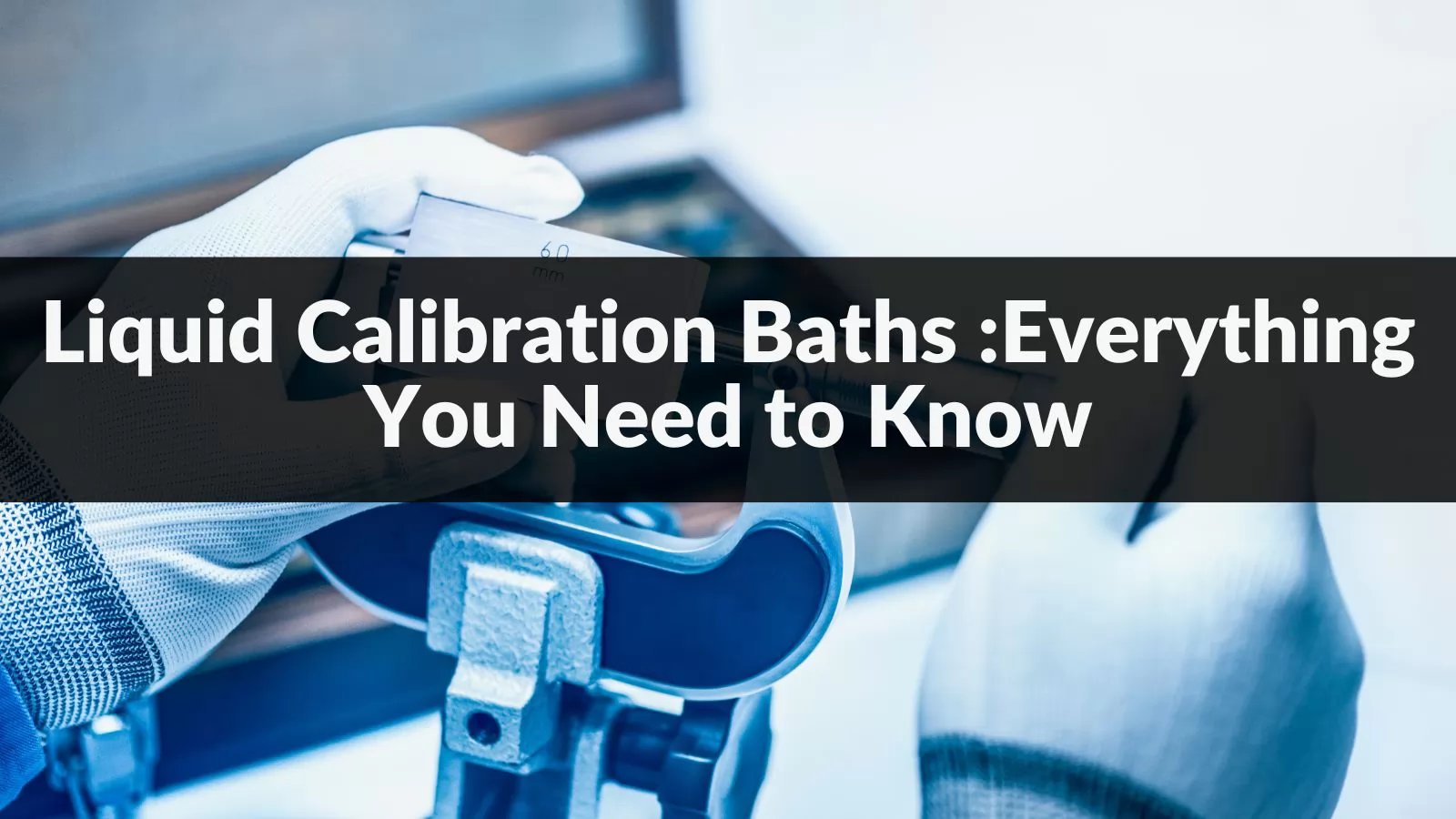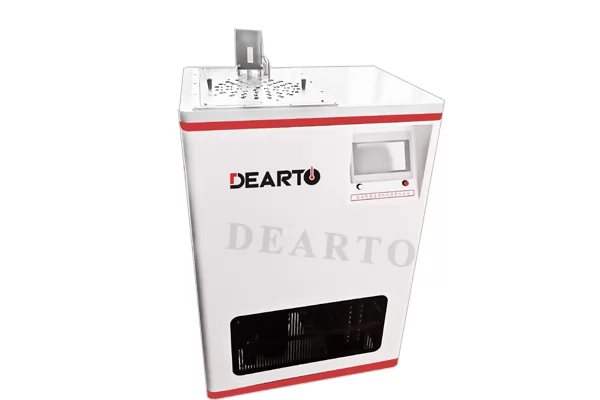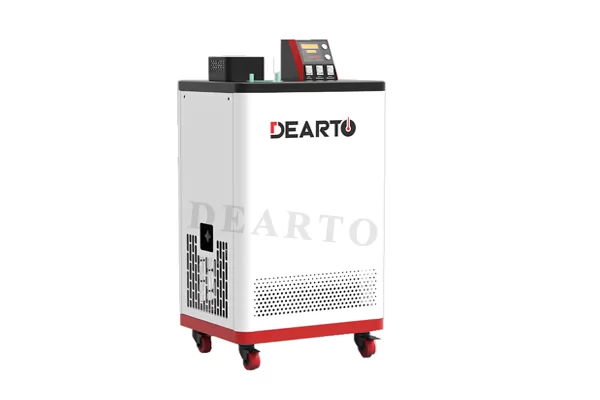
In a world that relies on accurate temperature monitoring, in industries ranging from manufacturing and healthcare to scientific research and food production, liquid calibration baths play a vital role in maintaining the reliability and accuracy of temperature measurements. These specialized tools provide a controlled and stable environment for precise calibration of thermometers and other temperature sensors.
| 1. | What is a liquid calibration baths? |
|---|---|
| 2. | Working Principles of liquid calibration baths: |
| 3. | Components and Features: |
| 4. | How to Use a Liquid Calibration Baths? |
| 5. | Conclusion |
What is a liquid calibration baths?
A liquid calibration bath is a specialized tool designed to calibrate temperature sensors and thermometers with high precision. It provides a controlled and stable temperature environment, allowing for accurate and reliable calibration of these instruments.
The bath utilizes a constant temperature liquid, such as water, oil, salt, or metal, which is maintained at a specific temperature using a heater or cooler. The temperature sensor or thermometer is immersed in the liquid until it reaches the same temperature, enabling precise calibration against a known standard.
Working Principles of Thermocouple Calibration Baths
Liquid calibration baths employ a variety of components and mechanisms to achieve precise and stable temperature control for calibrating thermometers and temperature sensors.
a. Liquid Injection and Heating/Cooling:
This includes selecting a suitable liquid, choosing an appropriate heating or cooling method, and using a temperature control system to maintain the temperature.
b. Immerse Thermometer/Sensor:
The thermometer or sensor must be fully immersed, placed in the center of the bath, and secured with a fixing device to ensure accurate measurement.
c. Wait for Temperature Equilibrium:
The required waiting time depends on the liquid volume, heating or cooling rate, and the heat capacity of the thermometer or sensor. It is important to ensure a stable reading and consider measurement errors.
d. Read Temperature:
The temperature can be read using an analog dial, digital display, or computer interface. The reading should be recorded along with relevant information such as measurement time and ambient temperature, and data analysis can be performed to evaluate the accuracy and stability of temperature control.
e. Calculate Calibration Error:
The calibration error should be analyzed to determine its causes, and measures should be taken to reduce the error.

Large Caliber Precision Liquid Calibration Bath
which can meet the customization/calibration of various temperature sensors.Special index products can be customized according to requirements

Precision Liquid Calibration Bath
The temperature field uniformity is good by using double bath side stirring mode.High resolution display instrument, resolution 0.001℃.Humanized design control is comfortable and convenient
Components and Features
1. Container:
The container holds the liquid. It is typically made of metal, plastic, or glass.
2. Heater:
The heater heats the liquid to the desired temperature. It is typically made of a resistance wire or a ceramic heating element.
3. Temperature controller:
The temperature controller controls the temperature of the heater. It is typically a PID controller or a digital controller.
4. Stirrer:
The stirrer is used to distribute the liquid temperature evenly in the container. It is typically driven by a motor or a magnetic force.
5.Accuracy characteristics:
Liquid calibration baths can provide high-accuracy temperature control.
6.Stable features:
Liquid calibration baths can provide stable temperatures.
7.Uniformity characteristics:
Liquid calibration baths can provide uniform temperature distribution.
8.Repeatability characteristics:
Liquid calibration baths can provide repeatable temperature measurement results.
How to Use a Thermocouple Calibration Bath?

Before you begin, always consult the specific user manual and safety instructions for your particular model of liquid calibration bath.Here's a general guide on using a liquid calibration bath:
Step 1: Preparation
- Fill the bath with the appropriate liquid based on the desired temperature range and manufacturer's recommendations. Common options include water, oil, or silicone oil.
- Turn on the bath and set the desired temperature using the temperature controller.
- Allow the bath to reach and stabilize at the set temperature. This may take some time, depending on the bath's size and desired temperature.
Step 2: Placing the Device Under Calibration (DUT)
- While the bath is stabilizing, prepare the device under calibration (DUT). Ensure the DUT is clean and free of any debris or contaminants that could affect the reading.
- Mount the DUT securely in the bath. The specific mounting method will depend on the DUT's design and the bath's configuration. Consult the user manual for proper placement.
- Ensure the DUT is fully submerged in the liquid, but not touching the bottom or sides of the container. This ensures the sensor is exposed to the uniform temperature of the bulk liquid.
Step 3: Calibration Process
- Follow the specific calibration procedure for your DUT. This likely involves comparing the DUT's reading against a reference thermometer or sensor with known accuracy.
- Record the readings from both the DUT and the reference at specific intervals throughout the calibration process. This data will be used to adjust the DUT's readings for accuracy.
- The duration of the calibration process will vary depending on the specific requirements. Some procedures may involve multiple temperature points and stabilization times.
Step 4: After Calibration
- Once the calibration is complete, carefully remove the DUT from the bath.
- Turn off the bath and allow it to cool down completely before cleaning or storing.
- Record the calibration data and any adjustments made to the DUT. This documentation is crucial for maintaining traceability and ensuring the accuracy of future measurements.
Step 5: Additional points to remember
- Always wear appropriate personal protective equipment (PPE) when handling hot liquids.
- Be aware of the potential hazards associated with using flammable liquids.
- Never leave the bath unattended while it is operating.
- Dispose of used calibration liquids according to local regulations.
Conclusion
Liquid calibration baths play a crucial role in ensuring accurate and reliable temperature measurements by calibrating temperature sensors against known temperature references. Understanding how these baths work and how to use them effectively is essential for technicians and engineers involved in temperature calibration processes.
By comprehending the working principles, components, and features of liquid calibration baths, technicians can operate them proficiently. Adhering to proper procedures, including preparation, temperature setting, immersion of sensors, monitoring, and data analysis, will help achieve accurate calibration result
If you have other questions, please contact us!



